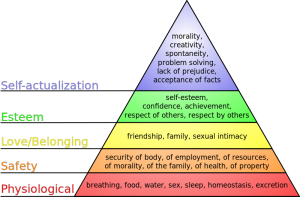Employee motivational theories are like roadmaps that help employers in understanding what keeps people going. Let’s dive into these theories together to see how they explain the reasons behind actions.
‘People often say that motivation doesn’t last. Well, neither does bathing. That’s why we recommend it daily.’ – Zig Ziglar, American author
Managers have a direct responsibility for employee performance. Thus they need to consistently motivate and inspire employees.
Employees can be motivated to complete the task at hand, but to excel, they require inspiration from their managers.
On that note, let us delve into the various employee motivational theories at the workplace.
The Theories X, Y and Z, describe very different attitudes towards motivation at the workplace. Managers tend to follow one of these approaches in their everyday struggle to motivate their teams.
Read on to understand each one and find the right fit for your organization.
What is Theory X of Employee Motivation?
Imagine an office scenario where your employees are treated as kids, who don’t act responsible for their work. They are told exactly what, when and how to do their work. They are even scolded or punished if work is not completed. Most often, the manager micromanages like a teacher who is waiting to correct mistakes. Doesn’t sound like much fun?

According to this theory, managers assume that your employees are incapable or procrastinate. Hence it is believed that your people need to be closely supervised.
Your employees are expected to show little proactive behavior and avoid responsibility whenever they can.
To successfully pull this off, a hierarchical structure is needed, with a narrow span of control at each level – for effective management.
Working Style of Theory X Managers
Managers, who believe in Theory X of employee motivation, think most of your people are out to look after themselves only, and that their sole interest in the job is to earn money.
These managers tend to blame your employees in most situations, without questioning the existing systems, policies, or lack of training; which could be the real cause of failures.
A Theory X manager believes that it is his job to structure the work and energize their employees. The result of this line of thought is that Theory X managers naturally adopt a more authoritarian style. They focus on meting out punishments to defaulters.
Popular Verdict on Theory X
Most managers do not believe in Theory X of motivation. But inevitably are seen to be practicing exactly what they don’t preach.
However, many believe that a Theory X manager could impede employee morale and productivity. Multinationals are striving to move away from it as this motivational method can almost be stifling. Especially for the growing millennial population.
What does Theory Y motivation say?
An office with sleep pods, the latest PlayStation consoles, work-from home options, informal dress code and office happy hours – sounds like an employee dream? This office culture is typical of a Theory Y system of employee motivation.
But can it really get work done at your organization?
Over 50 years ago, Douglas McGregor (author of The Human Side of Enterprise) created the concept of Theory Y, and suggested that it is much more efficient than Theory X of motivation.
The premise is that your employees will always find ways to get their work done and therefore there is no need to mollycoddle them.
Working Style of Theory Y Managers
If your management is influenced by this theory, it then assumes that employees are ambitious, self-motivated, and eager to accept responsibility. They are expected to exercise self-control, autonomy and empowerment.
They will believe that your employees enjoy their work. Giving your people the freedom to perform to the best of their abilities, without being bogged down by rules.
A Theory Y manager believes that, given the right conditions, most people will want to do well at work and that there is a pool of unused creativity in the workforce. They also believe that the satisfaction of doing a good job is a strong motivation in itself.
A Theory Y manager will try to remove the barriers that prevent workers from tapping into their full potential.
Popular Verdict on Theory Y
People tend to interpret Theory Y as a positive set of assumptions about workers.
A close reading of ‘The Human Side of Enterprise’ reveals that McGregor simply argues for managers to be open to a more positive view of workers and the possibilities that create enthusiasm.
These managers are keen to make their employees comfortable in their work environment, help them achieve their self-actualization goals and give them guidance, when required.
This is the most accepted theory, amongst managers, of employee motivation. Employees are also fans of this model, for obvious reasons.
And what about Theory Z of motivation?
Theory Z is a mix of practices, which ensure a healthy blend of systems and the freedom to perform at the workplace is likely to motivate the employees more. This mix of practices usually requires technology, into your HR systems, to be realized completely.
Theory Z builds on Theory Y of motivation at the workplace. Here the focus is on ensuring that your company has a strong set of values, and offers a long-range approach to training and development and a highly participatory style of management.
William Ouchi takes credit for coming up with Theory Z after conducting a comparative study between Japanese management(job security, group decision-making, social cohesion & holistic concern for employees) and American management (individual freedom, risk taking & quick decision-making) management practices.
Under this theory of motivation, your employees are:
- seldom fired from the workplace
- encouraged to participate in the company’s decision making process
- assimilated into one common company culture
How do Theory Z Managers Behave?
In theory Z of motivation at the workplace, your managers stress on:
- Mutual trust between members of your organization, as it is said to help reduce conflict and encourage team work
- Subtlety and sensitivity to other issues, as it is linked to higher productivity at the workplace
- Concern, support and disciplined unselfishness
Popular Verdict on Theory Z
While this is believed to be the most evolved theory of motivation, it does have its flaws –
1. It allows for employees to be disloyal to the company, even after getting job security
2. Since the theory does not prescribe any particular organizational hierarchy, it could lead to chaos at the workplace
Employee Motivational Theories and Maslow’s Hierarchy of Needs
One could grade the results of employee needs, which managers seek to satisfy, based on Abraham Maslow’s Hierarchy of Needs Theory.
Your managers must seek to fulfil the basic needs (physiological and safety) of employees first, before going ahead and addressing the next few levels (of esteem and self-actualization and of human needs).
According to Maslow, individuals must satisfy lower-level needs before progressing to higher-level ones. As an example, let’s consider an employee who has just started a new job. Initially, their primary focus may be on fulfilling basic physiological needs such as earning enough money to afford food and shelter. Once these needs are met, the employee may then seek safety and security in the workplace, such as job stability and a safe working environment.
Thus, your managers need to understand if they should operate at:
- Level one (Theory X) where the focus is on pushing your employees to work like drones and fulfil a predetermined set of tasks. This links to physiological needs (money and sustenance) and safety (job security).
- Level two (Theory Y) where the focus is on letting your employees achieve their personal and professional goals by trusting in their judgment and sincerity towards the job. This links to social and esteem needs – to be known as a good employee and self-actualization needs of the employee – for growth and better prospects.
With Theory Z, the focus is on providing the relevant training and guidance to your employees so that they can achieve their career and the organization’s goals. This builds on the needs exhibited by Theory Y employees.
Conclusion
Theory X, Y & Z of employee motivation have been used in human resource management, organizational behavior analysis, and organizational development. Though these employee motivational theories are very basic in nature, they provide a platform for future generations of management theorists and practitioners to understand the changing dynamics of human behavior.
Taken too literally, employee motivational theories X and Y seem to represent unrealistic extremes. Most employees (including managers) fall somewhere in between these poles. Recent studies have questioned the rigidity of the model, yet McGregor’s X-Y Theories remain guiding principles to the management to evolve HR processes which help in organizational development.
We think that the more you practice theory Z of employee motivation; the closer you are to effective Talent Management.
Which theories of employee motivation have you subscribed to?







The concept of employee motivational theories X, Y and Z are very well explained. Informative post.
Nice article
I read this article. I think You put a lot of effort to create this article. I appreciate your work.